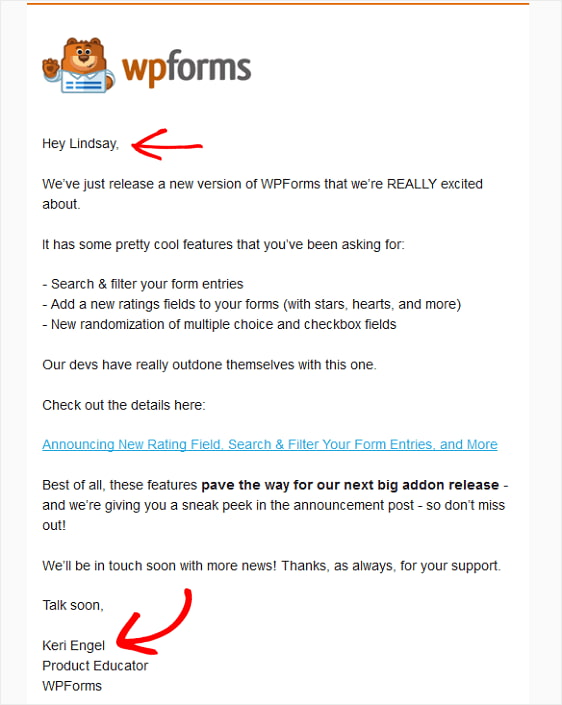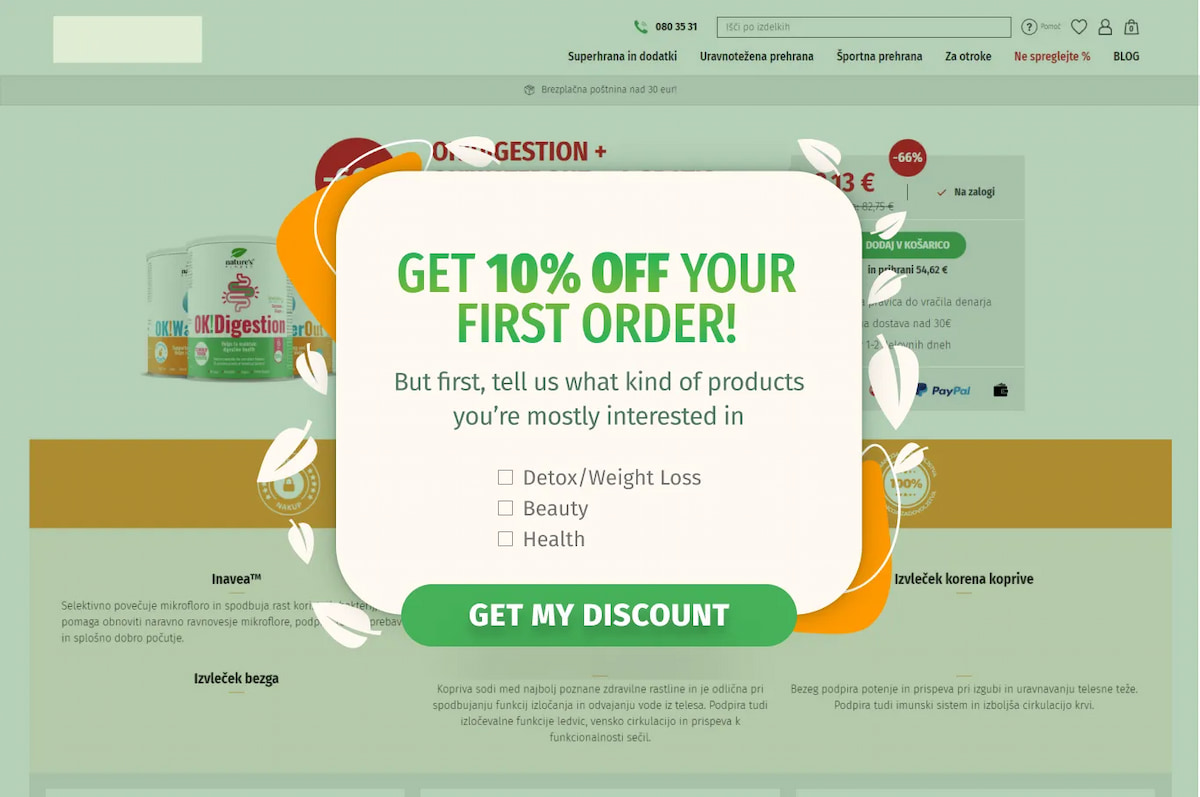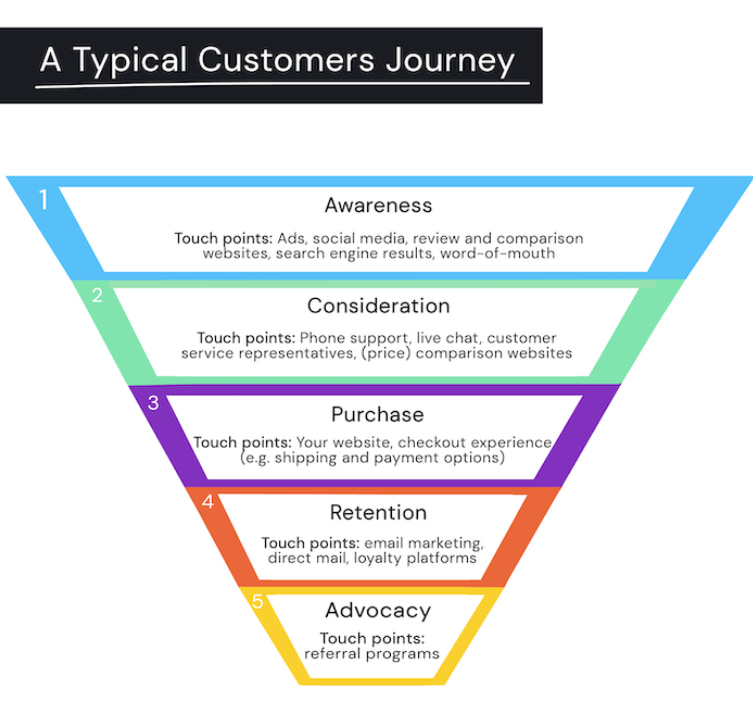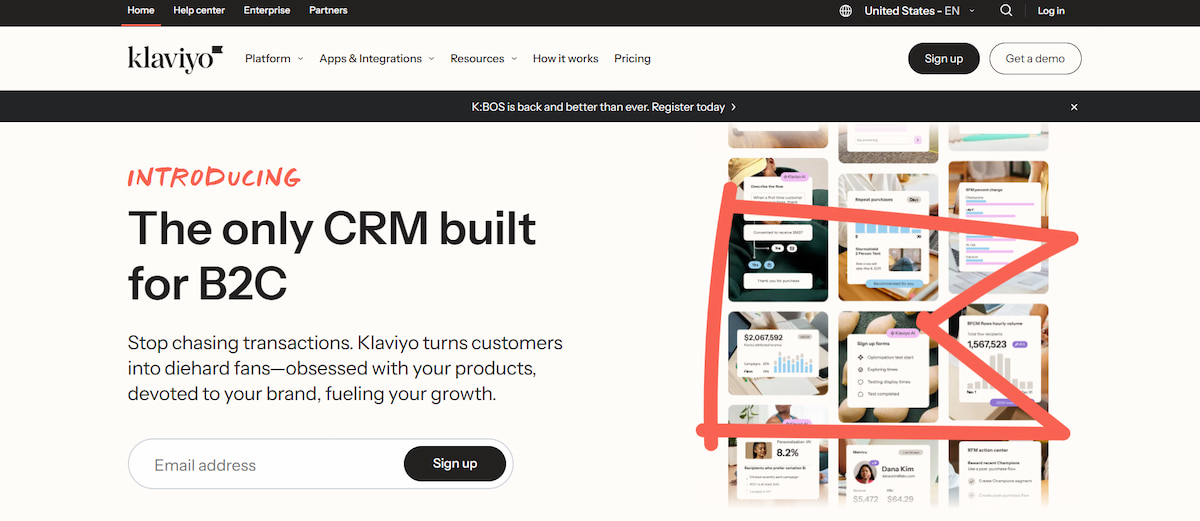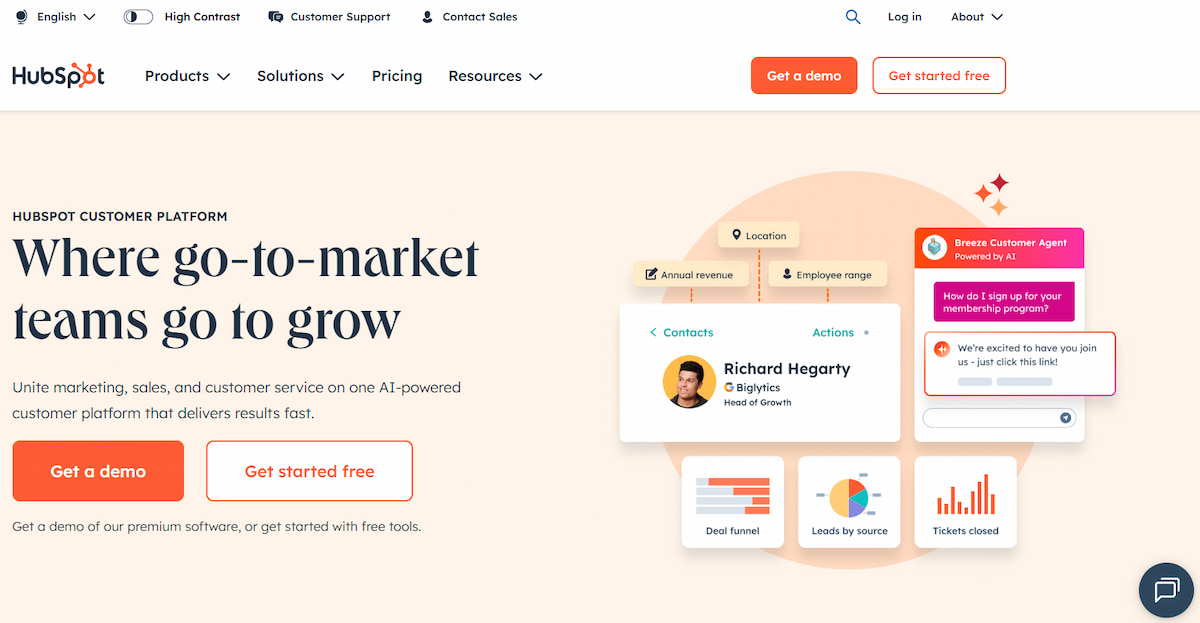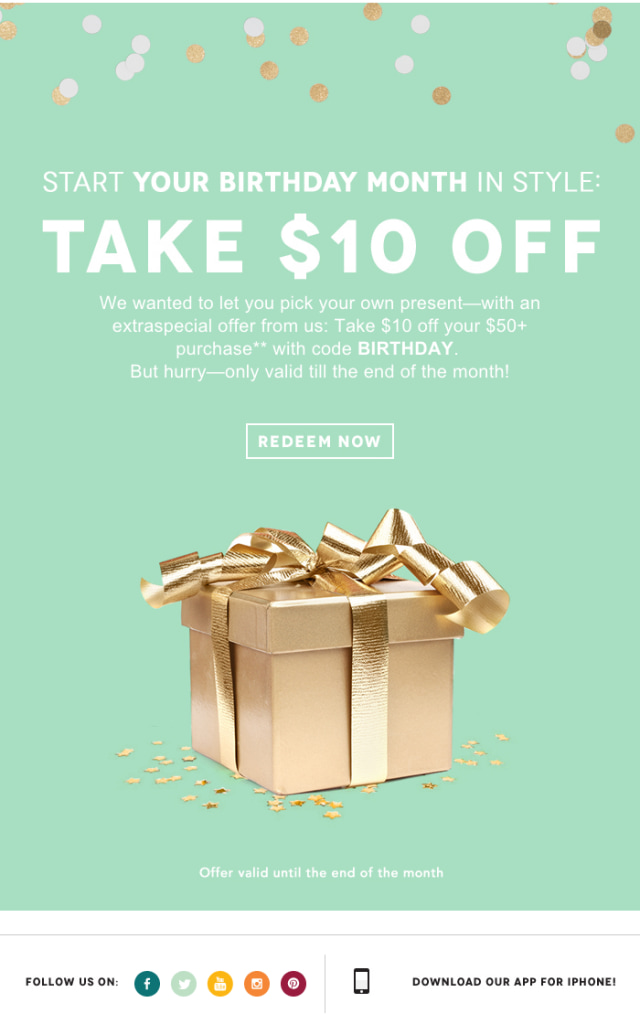Generic email blasts rarely yield effective results. Personalised email marketing campaigns make use of subscriber data, such as purchase history, browsing habits, and expressed preferences, to deliver more relevant communications. This method regularly leads to better open rates, more clicks, and increased revenues.
This article contains a short instruction for novices. You’ll learn how to collect data, identify your audience, choose the finest tools, and set up automated campaigns that provide better results.
You can also explore more ways to make personalized emails drive improved conversions, with practical methods that show how small adjustments can lead to stronger engagement.
Table of Contents
What Is Personalised Email Marketing?
You know the generic promotional email that appears in your inbox every other day? The one that begins with “Dear Valued Customer” and attempts to sell you something you would never buy? How quickly did you trash it?
Consider an email that looks to be delivered specifically to you. It recommends a product you were looking at online, serves as a pleasant reminder about something in your basket, or even wishes you a happy birthday with a modest gift. Is that right there? This shows the effectiveness of personalized email marketing campaigns.
It’s quite simple: send relevant emails to your subscribers based on what they’ve already purchased, what they’re interested in, and even their location. Instead of sending the same message to everyone, you start a genuine conversation.
And this is so much more than just slapping someone’s first name in the subject line. Real personalization looks like this:
- Sending running shoe buyers an offer for socks;
- Reminding someone about the jacket they left in their cart;
- Recommending rain gear to subscribers in Seattle and sunscreen to those in Miami.
The idea is to make you feel seen. When an email is so pertinent, you don’t feel sold to; you feel assisted. And that’s when you want to open it, click, and, yes, even make a purchase. It has the feel of a friend’s recommendation rather than an advertisement.
Why Personalised Email Marketing Campaigns Are Essential
Let’s cut to the chase: personalization isn’t optional anymore. It’s essential. And this isn’t just opinion, the numbers don’t lie:
- Personalized subject lines get 26% more opens;
- Tailored content increases clicks by 14%;
- Targeted campaigns drive 58% of all email revenue;
- 80% of people prefer buying from brands that personalize.
Why does this work? Because it shows respect.
You treat subscribers like persons, not just numbers on a list. You’re focusing on what they really care about and providing them with relevant material at the correct moment. This is how you turn casual browsers into loyal customers.
Laying the Foundation – Data Collection and Segmentation
You cannot personalise what you do not know. The first and most crucial step is gathering data and using it to group your audience into meaningful segments. A segment is a subgroup of your audience that shares common characteristics.
Step 1: Building a Permission-Based List
First things first: never buy an email list. It’s a bad idea. Those people did not request to hear from you, so they will simply designate you as spam, ignore your emails, and limit your ability to reach anyone’s mailbox.
Instead, make a list of people who really want to be there. Place sign-up forms in strategic points on your website, such as the bottom, a sign-up page, or a timed pop-up.
When implementing a pop-up for email collection, timing and design are crucial to avoid frustrating visitors while maximizing conversions. A well-crafted pop-up should appear after users have spent enough time on your site to understand your value proposition—typically 30-60 seconds or after they’ve scrolled through a certain percentage of content—rather than immediately upon arrival.
Make sure your pop-up includes a clear value exchange, such as a discount code, free resource, or exclusive content, so visitors feel they’re gaining something worthwhile in return for their email address.
Give folks something worthwhile as a reason to join up. Discounts, free guides, webinar invites, and helpful checklists are all useful. You may also use social media to promote your sign-up page and convert people into subscribers.
Step 2: Collecting the Right Data
When someone signs up, you typically only get an email address. The key is to gather more data over time, gracefully.
- The Signup Form: Begin simply. Request a first name and email address. More fields create friction and reduce conversion rates;
- The Welcome series: After signing up, send them a nice email with a couple of basic questions to get to know them better (for example, “What are you most interested in? [Option 1], [Option 2], [Option 3]”);
- Preference Centers: This is a sophisticated yet powerful technique. A link in your email footer lets subscribers select the sorts of emails they wish to receive and how frequently;
- Tracking Engagement: Your email marketing software will automatically monitor who opens your emails and which links they click. This is gold dust for segmentation.
Step 3: Segmenting Your Audience
Data is meaningless unless it is used. Segmentation is just a clever approach to classifying your subscribers so that you can avoid sending unnecessary emails.
Consider how you would market to a first-time visitor vs a monthly customer. Segmentation makes it possible.
Where to start? Focus on these crucial categories:
Demographics
This includes basic criteria like age, gender, or location. For instance, you could send a promotion for rain boots to subscribers in Seattle or a “come in from the cold” offer to those in colder climates.
Psychographics
This groups subscribers by their interests and preferences. A common example is creating a segment for everyone who downloaded a specific lead magnet, like a vegan recipe ebook.
Behavioural
This is frequently the most effective sort of segmentation because it is based on subscribers’ activities. Key behavioral segments include:
- Purchase History: Group your previous buyers, your big spenders (VIPs!), or everyone who bought a specific category of product, like “all skincare customers”;
- Engagement Level: This is huge for keeping your list healthy. Separate your super-fans (opened an email recently) from your inactive subscribers (radio silence for 90+ days). You can then re-engage the quiet ones or stop sending to them to protect your sender reputation;
- Website Activity: Target users based on what they did on your site. Think cart abandoners, people who viewed a product but didn’t buy, or readers who devoured a specific blog post.
A last significant approach to categorize your audience is by Customer Journey Stage, which includes new subscribers, first-time buyers, and loyal repeat customers.
Beginner Action Step
Avoid trying to create too many segments at once. Start with just 2-3 simple ones to manage effectively. Practical starting segments include:
- New Subscribers (to trigger a welcome series);
- Past Customers;
- Engaged vs. Inactive Subscribers (to tailor content or launch a re-engagement campaign).
Choosing an Email Marketing Platform
Trying to personalize emails in Gmail or Outlook for a growing list? Good luck. Those tools aren’t built for that.
You need a real email marketing platform (an ESP). It handles the heavy lifting—sending bulk mail without the spam folder, keeping your contacts tidy, automating campaigns, and making personalization actually possible.
Core Features to Consider
When evaluating platforms, focus on features that support both immediate customization and long-term growth:
- Automation workflows that react to what people do;
- Segment your audience to send truly relevant messages;
- Personalize content instantly with simple codes;
- Track what actually converts—not just what gets opened.
Learn more about how these features improve lead nurturing and conversions in our article on email marketing automation.
Popular Beginner-Friendly Options
There’s no shortage of ESPs, but a few stand out for beginners:
Mailchimp
Mailchimp, widely considered the go-to for newbies, is user-friendly, has drag-and-drop editors, and has a large free plan that allows you to get started without incurring any upfront costs.
MailerLite
If you’re running a small team and need an email platform that just makes sense, MailerLite is a top choice. It’s built with a clear, simple layout so you can find what you need instantly, without sacrificing the powerful tools you actually need to grow.
Klaviyo
Klaviyo, a popular e-commerce platform, works seamlessly with Shopify, WooCommerce, and BigCommerce. It provides detailed statistics and personalized product recommendations, which are great for online enterprises.
HubSpot
HubSpot is more than an email platform—it’s a full marketing and CRM system. It’s perfect for businesses that want email tied to sales, customer service, and broader marketing efforts.
Getting Started with Your Chosen Platform
Don’t just click around blindly. Every good platform has tutorials, guides, and help docs. Actually use them. Watch a webinar, browse the knowledge base, or join their community forum. Real people share real solutions there.
Play around with the dashboard first. Send test emails to yourself. Build a practice campaign. Break things now so you don’t break things later when it actually matters. The more you tinker upfront, the smoother everything will go when you’re ready for your first real campaign.
Crafting Your First Personalised Campaign – A Practical Walkthrough
It’s time to put the basics into practice. Here, we’ll create an abandoned cart email sequence—one of the most effective campaigns for winning back lost sales.
Scenario: A shopper adds an item to their cart but exits your store without completing the checkout process.
Step 1: Define Your Goal & Trigger
Every effective automation starts with a clear purpose and a defined starting point.
- Primary Goal: Recover the potentially lost sale;
- Secondary Goal: Understand hesitation points by monitoring engagement and reply rates;
- Automation Trigger: Cart Abandonment — This sequence is activated when a registered user adds a product to their cart but does not complete checkout within a set period (e.g., 1 hour).
Step 2: Plan Your Email Sequence & Strategy
A single email can work, but a strategic sequence significantly increases recovery rates. Here’s a proven structure:
Email 1 (1 hour after trigger): The Friendly Reminder
Purpose: A timely, helpful nudge.
Tone: Helpful and assumptive.
Email 2 (24 hours after trigger): The Value Adder
Purpose: Overcome objections and build trust.
Tone: Informative and reassuring.
Email 3 (72 hours after trigger): The Incentive
Purpose: Create urgency and close the deal.
Tone: Urgent but generous.
Step 3: Craft Personalised Email Copy
This is where data transforms a generic blast into a 1:1 conversation. Use your platform’s dynamic tokens to auto-populate details.
Email 1 Example: The Friendly Reminder
Subject Line A (Personalised): Hey *|FNAME|*, forgot something?
Subject Line B (Curiosity): Your cart is waiting!
| Pro tip: A/B test these to see what resonates with your audience. |
Body Copy:
Hi *|FNAME|*,
We noticed you left something behind! You were looking at the *|PRODUCT_NAME|* and it’s a great choice.
It’s saved in your cart and ready for you whenever you are.
[Button: Return to My Cart]
Have any questions? Just reply to this email—we’re happy to help!
Email 2 Example: The Incentive
Subject Line: *|FNAME|*, a special offer for you!
Body Copy:
Hi *|FNAME|*,
We know you’ve been busy, but we didn’t want you to miss out on the *|PRODUCT_NAME|* in your cart.
To help you decide, here’s 10% off your order.
Use code: CART10 at checkout.
[Button: Complete Your Purchase – 10% Off!]
This exclusive offer expires in 48 hours!
Step 4: Build & Activate Your Workflow
Now, bring your campaign to life inside your Email Service Provider (ESP).
- Navigate to the Automation or Workflow builder;
- Set the Trigger: Select “Abandoned Cart” as the starting event;
- Add Delays: Set up the delay timers for each email (e.g., wait 1 hour before sending Email 1);
- Build the Emails: Create each email step, paste your copy, and insert the personalisation tokens;
- Activate: Review your workflow and press “Start” or “Activate”.
Once live, this series will run automatically for every subscriber who meets the criteria, working 24/7 to recover revenue and engage customers.
Beyond the Basics – Intermediate Personalisation Tactics
Ready to make your emails feel even more personal? Try these prompts once you’ve got the basics down.
Show different things to different people in the same email. A subscriber in Minnesota might see winter coats, while someone in Florida sees swimsuits.
Recommend products they’ll actually want based on what they’ve bought before. Sold someone running shoes? Follow up with socks or gear.
Win back quiet subscribers who haven’t opened emails in months. Send a special offer or just ask if they still want to hear from you.
Don’t forget birthdays. A simple automated message with a personal discount makes people feel special and keeps them engaged.
Measuring Success and Iterating
Sending your campaign is like cooking the meal—but now it’s time to see if people actually liked it.
The real work begins after you hit “send,” by digging into your results.
Here’s what to keep an eye on:
- Open Rate: Did your subject line catch people’s attention?
- Clickthrough Rate: Was your material appealing enough to motivate individuals to take action?
- Conversion Rate: Did they actually do what you asked them to do (such as buy something)?
- Unsubscribe Rate: Are people leaving? A few is normal—a flood means you’re missing the mark.
- Revenue: At the end of the day, how much money did the campaign drive?
How to Keep Getting Better
Think of this as a cycle, not a one-time task.
Look at your numbers. After your abandoned cart series, which email got the most conversions? The first reminder or the last-chance discount?
Take a guess why. Ask yourself: “Was the discount in the first email too pushy? Was the subject line in the second one just not compelling?”
Test your theory. Try changing ONE thing. Send two different subject lines to small groups and see which one wins.
Stick with what works. Once you have a winner, make that your new go-to for everyone.
Do it all over again. Good email marketing means never being done. You test, you learn, and you improve—campaign after campaign.
Mistakes to Watch Out For
Personalisation is effective, but even minor mistakes can reduce its impact. Here are some common pitfalls to consider:
Avoid Crossing the Line
There is a fragile line between “Hey, I remember you!” Furthermore, “I’ve been watching you browse.” Mentioning someone’s geographical location or a product they looked at a few days ago might come out as nosy rather than helpful. Use data responsibly and respect their privacy.
Letting Your List Get Messy
Sending emails to outdated, bounced addresses or individuals who never open them? That is a fast trip to the spam folder. Regularly remove inactive subscribers to keep your list healthy and your reputation intact.
Making Useless Segments
Creating a segment for “people who like the color blue” is probably overkill. If your segments are too broad or random, your emails will still feel generic. Every group you create should have a clear reason for existing and a specific message.
Guessing Instead of Testing
Assuming you know what will work is a surefire way to leave results on the table. Why not test it? Try two different subject lines or send times to see what your audience actually prefers. You might be surprised.
Treating It Like a One-Off
Sending a single clever email and calling it a day won’t cut it. Personalization is an ongoing process. Look at what worked, learn from what didn’t, and keep improving your next campaign.
Conclusion
Getting started with personalised email marketing campaigns may seem challenging, but it doesn’t have to be complicated. You don’t need to apply every advanced technique right away.
Focus on the basics first: collect data responsibly, segment your audience, and launch a simple campaign such as a welcome series or abandoned cart reminder. Use personalization tokens like names or relevant details, then track results, learn from the data, and make improvements over time.
The most effective brands succeed by showing customers that their needs and preferences matter. Personalised email marketing campaigns is not just about sending messages—it’s about creating communication that is relevant and useful, which leads to stronger long-term results.
